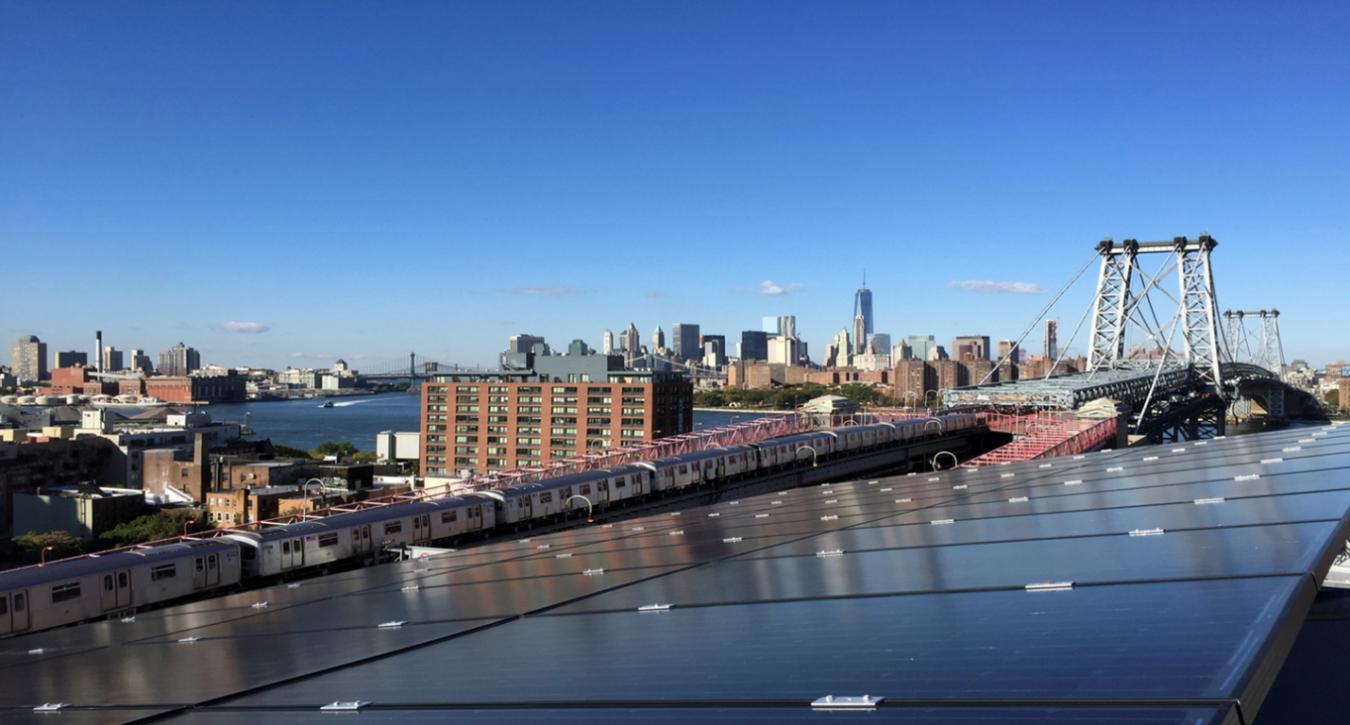If you want to power your home with clean energy and lower your electricity bills, but live in an apartment or multifamily home, don’t own your roof, or your roof isn’t suitable for a solar energy system, you can subscribe to a community solar project.
Solar Energy Technologies Office
October 13, 2021
Say you want to power your home with clean energy and lower your electricity bills, but you live in an apartment building or other multifamily home, you don’t own the roof over your head, or your roof isn’t suitable for a solar energy system. Fortunately, you can still reap the benefits of renewable power by subscribing to a community solar project.
With community solar, multiple customers sign up to buy electricity from a shared solar project, typically installed near where they all live. These projects can be built in many locations—on public buildings, private lands, brownfields like landfills, or even the roof of an apartment building. Depending on the size of the project and the amount of energy the customer buys from it, community solar can provide electricity for a handful of households or hundreds of homes and businesses. Typically, subscribers get a credit on their monthly electric utility bill for the energy produced by their portion of the project, lowering their home’s energy cost.
There’s more than one way to get community solar. Community solar projects are often owned by utilities or third-party developers, so subscribers can go solar without worrying about installation, permitting, or maintenance of the system. But some community solar projects are community-owned, where individuals set up a limited liability company (LLC) and handle all those things so that the project meets their needs and builds wealth in their community. And if you join a solar co-op to get community solar, you and your neighbors, including local businesses, can invest in a community solar project and earn a return on your investment, even if you don’t receive any energy from the project itself.
Starting or signing up for a community solar project in your area varies depending on location. State and local policy, as well as guidelines from your utility provider, can play a big role in how the project is designed. You’ll find over 1,600 community solar projects across 39 states and the District of Columbia, but 72% of them are in only four states: Minnesota, Florida, Massachusetts, and New York. Meanwhile, 21 states and the District of Columbia have passed laws to encourage or require community solar.
Since 2019, the U.S. Department of Energy (DOE) Solar Energy Technologies Office has been working to expand community solar through the National Community Solar Partnership—a coalition of stakeholders who are working to enable community solar systems to power the equivalent of 5 million households by 2025, creating $1 billion in energy bill savings. The partnership provides free resources, networking opportunities, and technical assistance so Americans can design and implement community solar projects.
If the internet and your local utility have told you there is no community solar project in your neighborhood, or you’re ready to help others gain access to community solar, join the partnership! You’ll have access to an online platform and webinars so you can engage with DOE staff and other partners; get technical assistance and insights from DOE, the national laboratories, and independent third-party experts; and have a chance to be a part of a network of community solar supporters and work address common barriers to wider solar adoption.
If you want to see a new community solar project in your area, this guide from the National Renewable Energy Laboratory is a helpful resource for community organizers, solar energy advocates, government officials, and utilities.
With nearly half of U.S. households and businesses lacking a suitable rooftop for solar energy systems, DOE is encouraging—and empowering—neighborhoods across the country to build community solar projects to give more Americans access to equitable, affordable, renewable energy.

